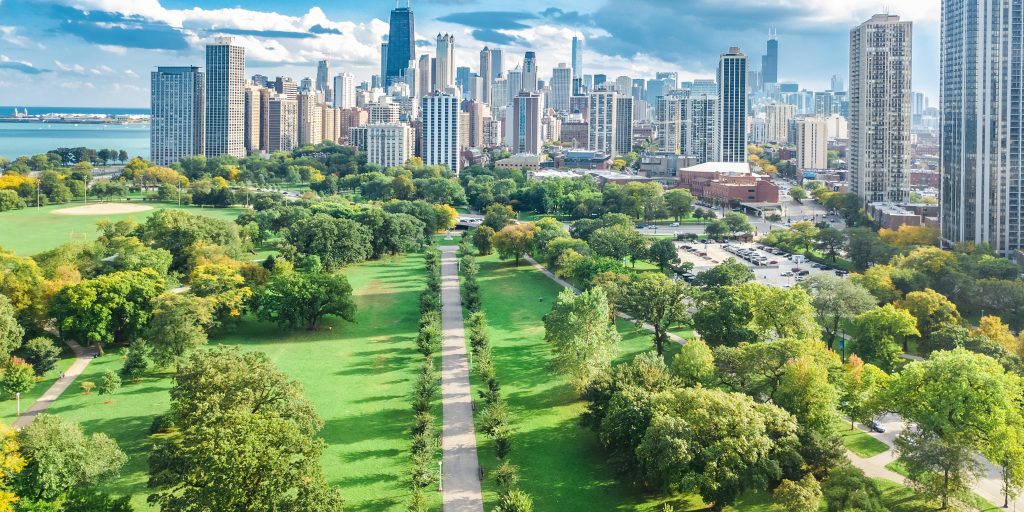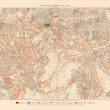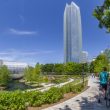Location intelligence can help support urban revitalization
Great urban revitalization strategies vary from city to city—and rightly so. Local consumer insights can provide urban planners with in-depth information about the preferences and interests of both city residents and visitors. In some cities, urban revitalization is a high priority, meaning urban planners need all the information and data they can get to help make informed, actionable decisions. Location intelligence, built on human mobility patterns, can give urban planners the timely, real-world consumer insights they need to design spaces that take into consideration the unique needs of each community.
With location intelligence, urban planners gain access to quality data that can aid in site selection for urban revitalization, creating a better understanding of resident and visitor needs, and keeping up with changes in economic activity. Ultimately, this can result in more resilient communities that are better places to live and work.
Provides a starting point
While it can be difficult to pick a site in need of revitalization, location intelligence can help urban planners figure out where to start.
A common starting point for planners is to learn about current land uses, site factors and cost/timing. Yet, additional information is often needed to thoroughly evaluate a site. Location intelligence can provide planners with the data they need to analyze foot traffic in areas of interest, helping them to see what current levels of activity look like in public spaces, on roadways, or at local businesses. This type of analysis can also be supplemented with census data, providing an even clearer picture for planners of the areas being studied.
Consider a city district that has experienced a drop in business activity and has no clear access to any mode of public transportation. This area also lacks green space, and its residents must travel long distances to shop, eat or participate in recreational activities. At the same time, as more people must travel longer distances, car traffic in the area has increased. Location intelligence could help show that this area would benefit from revitalization and improve the quality of life for its current residents.
Once a specific area has been flagged as in need of revitalization, urban planners can continue to use location intelligence to create a deeper understanding of both current residents and frequent visitors to the area.
Sheds light on resident and visitor interests and needs
Location intelligence can help urban planners gather additional information about the activities and interests of the people who live near the chosen site, providing valuable insight into what the community is looking for when it comes to their neighborhood.
Consumer behavior patterns may indicate that people in the area visit larger parks and recreational areas outside of their city more frequently than city parks or indoor shopping centers. This type of data can be used by planners to create concepts for new outdoor retail and recreational spaces in areas where business activity has slowed.
Planners can also deduce from this data that current residents and visitors are showing more of an interest in healthy lifestyle activities and would most likely welcome more green space in the neighborhood.
Helps keep up with economic activity
Urban revitalization is heavily reliant on keeping up with—as well as understanding—current economic activity, and location intelligence provides timely insight into how consumer behavior affects it.
To illustrate, by examining the percentage of the population that are frequent shoppers, planners can consider local shoppers’ preferences and interests when constructing a new outdoor retail center within the community. Using insights from location intelligence, urban planners can design and build projects that more people can enjoy while also attracting the types of businesses that will revitalize the local economy.
Taking this example a step further, knowing that residents are interested in health and fitness, planners could decide that an outdoor gym would be beneficial to the community. Having an outdoor gym that is widely used adjacent to a new retail development may encourage more businesses in the health/fitness space—a running shoe retailer, physical therapist or juice bar—to open storefronts knowing that their target customers are already nearby.
Conclusion
Location intelligence can be a valuable tool in assisting urban revitalization teams in their efforts to develop a deeper understanding of the people who live and work in their cities. By providing planners with a better understanding of what residents and visitors truly want and need, insights obtained from aggregated location data can ultimately improve the quality of life for those who live in these communities while providing a much-needed boost to the local economy.
Jeff White is the founder and CEO of Gravy Analytics. Prior to founding Gravy, he founded several companies and led them to successful exits. These companies include mySBX (sold to Deltek in 2009) and Blue Canopy (sold to a private investment firm in 2007).



















